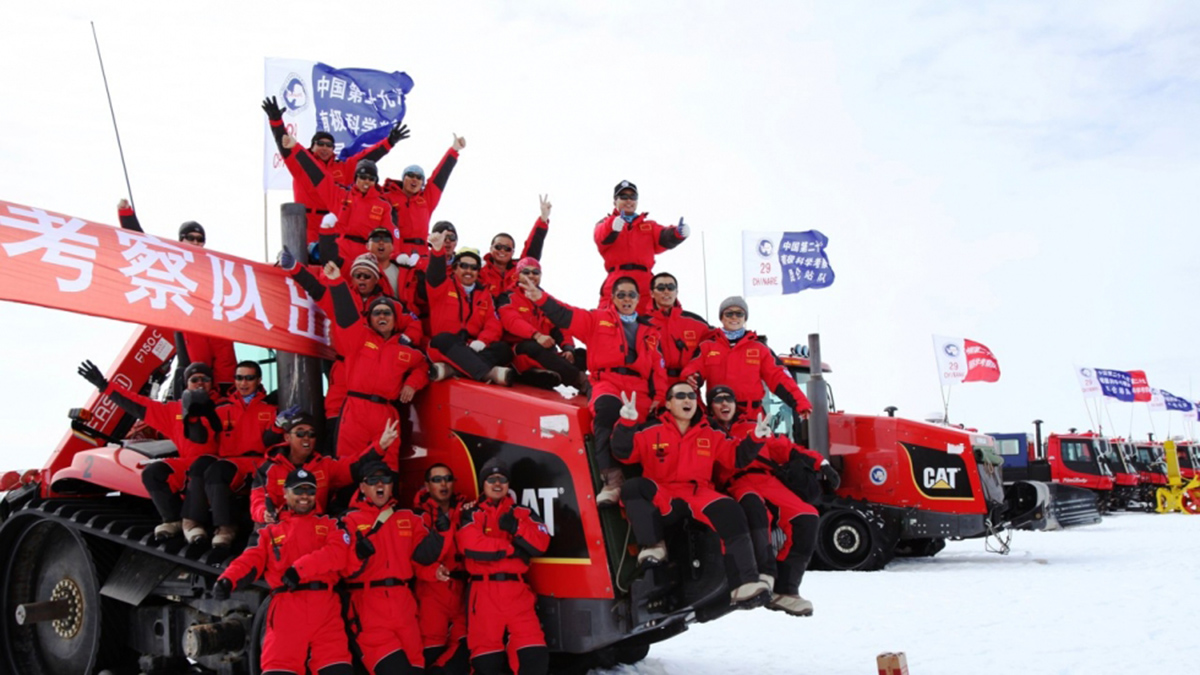The Morrison government’s confrontation with China is about to escalate, as Australia finally gets serious about its security in Antarctica. In a long-overdue move, Australia will strengthen its historic claim to Antarctic territory and push back against China’s expansion there.
As I wrote some years ago, it is well known that China has been building facilities in Australia’s Antarctic territory — but no-one knows just what. That is because, unbelievably, no Australian government in years has bothered to check up on what the Chinese are up to. Yet, Australia is well within its legal rights to inspect Chinese facilities, at any time and with or without China’s permission.
PM Scott Morrison is finally set to use those rights.
Australia will dispatch fleets of hi-tech drones, helicopters, planes and snow vehicles to Antarctica, pushing back against aggressive Chinese and Russian expansion across the southern ice continent.
Scott Morrison on Tuesday will unveil an $804m strategy to strengthen Australia’s 42 per cent claim over Antarctica and protect against foreign moves to undermine the Antarctic Treaty.
It’s undeniable that this is in large part an election tactic. Morrison is hedging his re-election strategy on foreign policy — a rarity in Australian politics, and also one of his few strengths. Purely coincidentally, Antarctic operations are based in a strategic electorate.
Mr Morrison – who has put national security at the heart of his re-election strategy – will announce his reinforcement plans for Australia’s southern territory in the Labor-held Tasmanian seat of Lyons on Tuesday […]
The funding boost for Antarctic operations, supporting 685 direct jobs, comes amid unprecedented moves by Beijing and Moscow to increase their strategic footprints on the continent and access new mining, defence and fishing territory.
The pre-election package includes a new drone fleet and other autonomous vehicles to map inaccessible areas of East Antarctica and establish an “Antarctic eye” with integrated sensors and cameras feeding real-time information.
Four new 550km-range helicopters and modern intra-continental planes will be added to the existing fleet of aircraft, allowing access to parts of the continent not previously reached.
But just because it’s political, doesn’t mean it’s wrong or unnecessary.
An Australian Strategic Policy Institute report last year warned the nation faced losing influence in Antarctica to China and other nations if it failed to progress plans for a year-round paved runway on the frozen continent. A separate ASPI report said there was a new “level of distrust” in the Australia-China Antarctic relationship as Beijing disrupts the consensus Antarctic Treaty system.
The government’s Antarctic strategy, which will establish more mobile stations on the continent, focuses on enhancing Australia’s international engagement to support the “rules and norms” of the treaty system and promoting its leadership in Antarctic affairs.
The announcement is cleverly pitched to appeal to not just China hawks, but to throw a sop to green types in the affluent Hobart suburb of Sandy Bay and try and lure them away from wet green independent Andrew Wilkie.
It will also increase support for scientific research, including monitoring sea level rises, increasing global understanding of climate change impacts, remove legacy waste, improve environmental management and establish a new krill aquarium in Hobart.
The Australian
Australia’s large stake in Antarctica is a legacy of geography and history. Hobart has for more than a hundred years been a jumping-off point for Antarctic expeditions, from Scott and Amundsen to Mawson. Indeed, historic links to Antarctic exploration go back to the first European explorers: of the two ships of Cook’s second voyage of discovery, Furneaux in the Adventure charted Tasmania’s east coast, while Cook himself in the Resolution came within scant kilometres of being the first human being to set eyes on the Antarctic mainland.
When the Antarctic Treaty was co-signed by Robert Menzies in 1959, Australia claimed the largest Antarctic territory of the seven nations to do so. Part of Australia’s claim abuts New Zealand’s, making it in both our nations’ interests to know just what the Chinese are secretly getting up to, down there.

